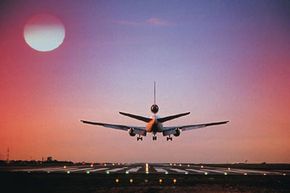Modern Autopilot Systems
Many modern autopilots can receive data from a Global Positioning System (GPS) receiver installed on the aircraft. A GPS receiver can determine a plane's position in space by calculating its distance from three or more satellites in the GPS network. Armed with such positioning information, an autopilot can do more than keep a plane straight and level -- it can execute a flight plan.
Most commercial jets have had such capabilities for a while, but even smaller planes are incorporating sophisticated autopilot systems. New Cessna 182s and 206s are leaving the factory with the Garmin G1000 integrated cockpit, which includes a digital electronic autopilot combined with a flight director. The Garmin G1000 delivers essentially all the capabilities and modes of a jet avionics system, bringing true automatic flight control to a new generation of general aviation planes.
Advertisement
Wiley Post could have only dreamed of such technology back in 1933.
For more information about autopilots, check out the links below.
Related HowStuffWorks Articles
More Great Links
Sources
- Cook, Marc E. "Meet Mechanical Mike." AOPA Pilot, October 1995. http://www.aopa.org/special/microsoft/articles/bbb9510.html
- Encyclopedia Britannica 2005, s.v. "automatic pilot." CD-ROM, 2005.
- "How Things Work Today," edited by Michael Wright and Mukul Patel, Crown Publishers, New York, 2000.
- McClellan, J. Mac. "Garmin Autopilots in New Cessnas." Flying Magazine, May 2007. http://www.flyingmag.com/article.asp?section_id=17&article_ id=805
- McGraw-Hill Encyclopedia of Science and Technology, 5th edition, s.v. "servomechanism."
- National Transportation Safety Board report NYC99MA178. http://www.ntsb.gov/NTSB/brief2.asp?ev_id=20001212X19354&ntsbno= NYC99MA178&akey=1
- World Book 2005, s.v. "automatic flight control system."
- World Book 2005, s.v. "Post, Wiley."
